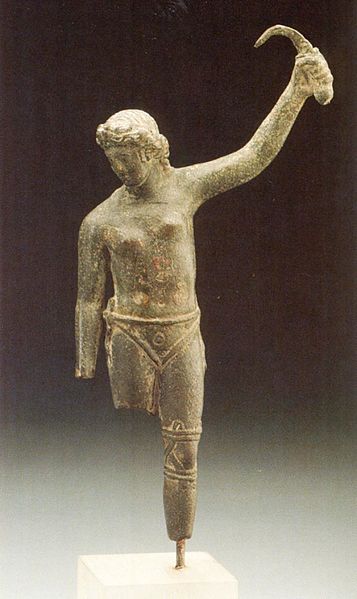Training Regimens
Training Regimens
Female gladiators, known as "gladiatrices," would have undergone rigorous physical training to prepare for combat, just like male gladiators. This training would occur in a "ludus" (plural "ludi"), which were professional gladiatorial training schools. These schools were often run by a "lanista," who was both the manager and trainer. The training included strength and conditioning exercises to build endurance and muscle, combat techniques, and handling various weapons typical to gladiators such as swords, shields, and spears.
Combat Styles and Weapons
Gladiators, regardless of gender, were often categorized by the type of armor and weapons they used, which also dictated their fighting style. While specific evidence on the exact categories for female gladiators is sparse, they likely mirrored some of the established types known from male gladiatorial combat:
- Retiarius: Typically lightly armored, wielding a trident and a net.
- Murmillo: Featuring heavy armor and a large shield, paired with a short sword.
- Thraex: Armed with a small square shield and a curved sword called a sica.
If female gladiators adhered to these categories, their training would have specialized according to their equipment and expected combat style, focusing on maximizing their strengths and understanding their weaknesses in the arena.
The Arenas and Their Fights
Female gladiators would have fought in the same grand arenas as men, such as the Colosseum in Rome. Their battles were likely scheduled as special attractions given their rarity and the novelty of female combatants in the public eye. These events could draw large crowds, offering a mix of entertainment that ranged from admiration to the spectacle of combat.
Nature of the Matches
The nature and rules of combat for female gladiators might have varied. Some historical depictions suggest that fights could be ceremonial or symbolic, potentially non-lethal, designed more for display and entertainment rather than a fight to the death. However, it's also possible that like their male counterparts, fatal conclusions were not uncommon, depending on the context of the event and societal attitudes at the time.
Psychological Preparation
Apart from physical training, gladiators would need significant mental preparation. They had to face the possibility of death or severe injury and the pressure of performing in front of thousands of spectators. For female gladiators, this pressure was compounded by the cultural and social expectations placed upon them as women stepping into what was traditionally a male role.
Aftermath and Recovery
Following a fight, gladiators who were wounded were cared for by doctors specialized in gladiatorial injuries, known as "medici." Successful gladiatrices, like their male counterparts, could gain fame and wealth, potentially earning their freedom if they were originally slaves.
